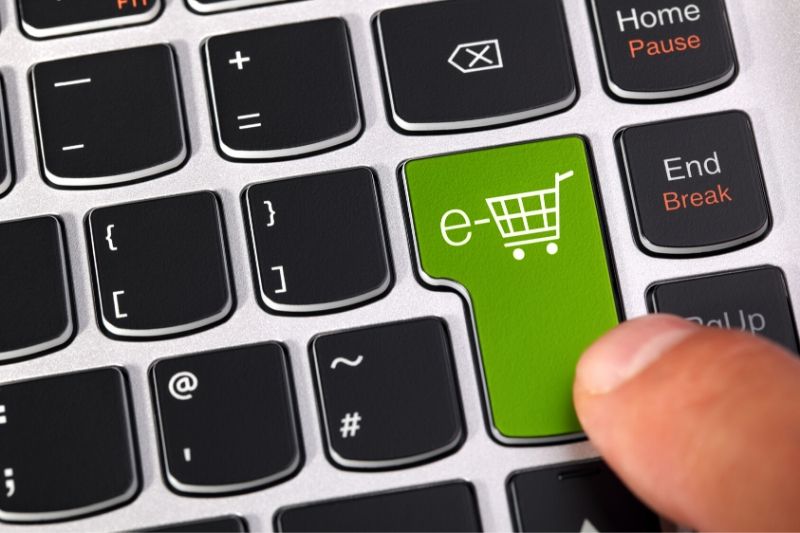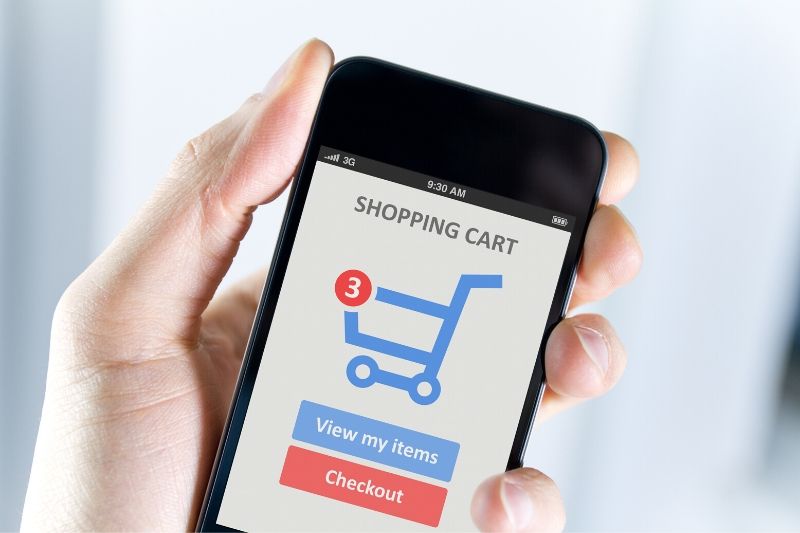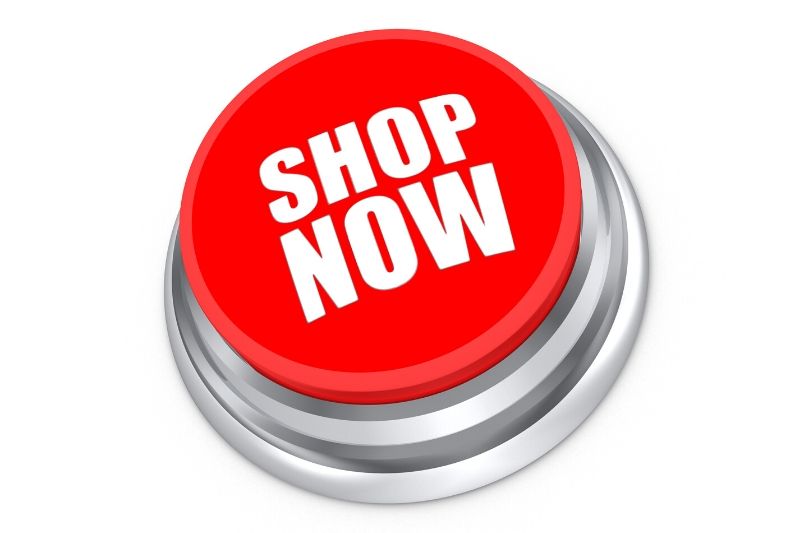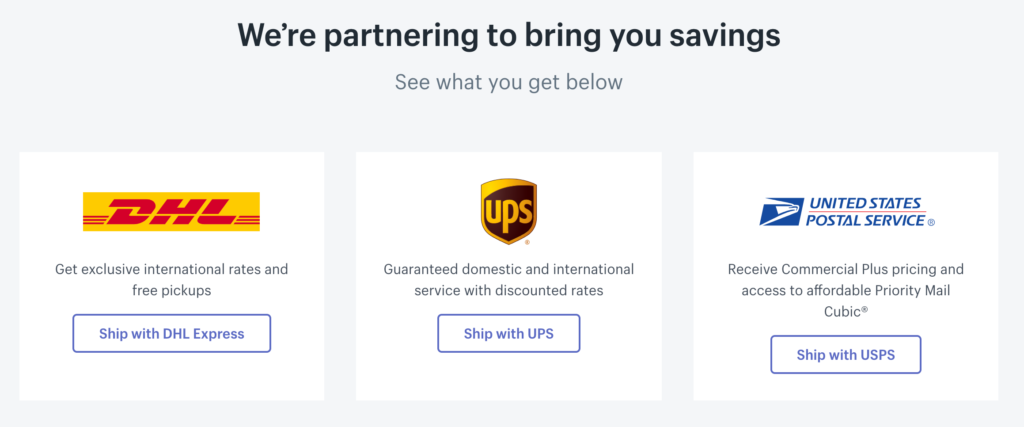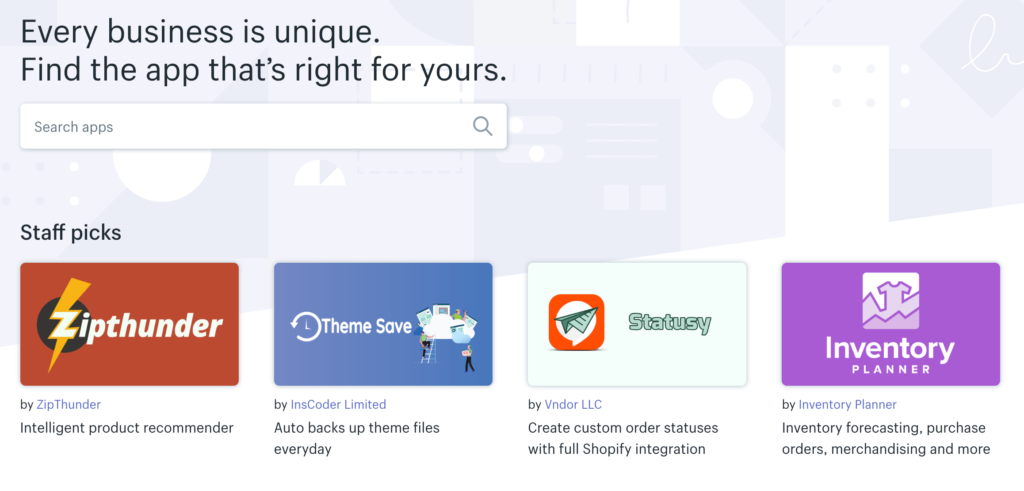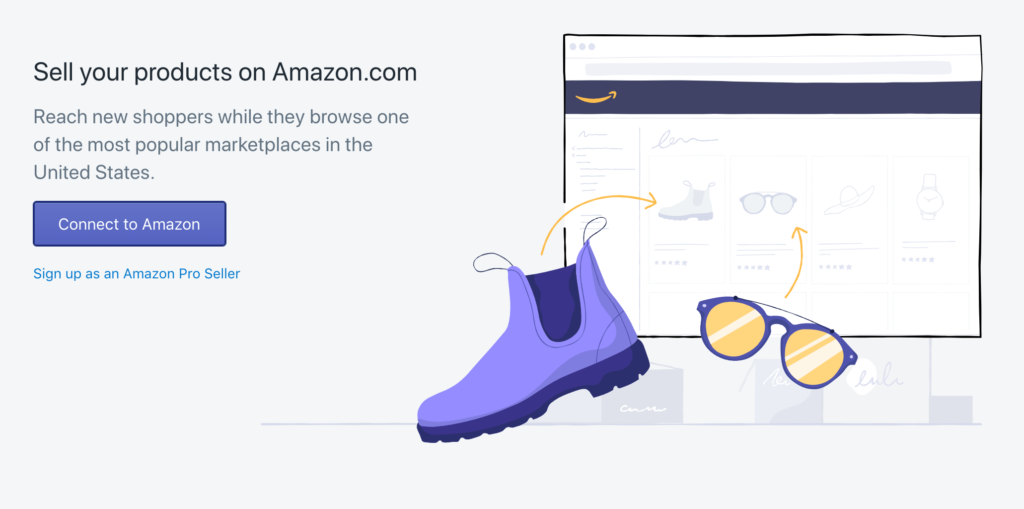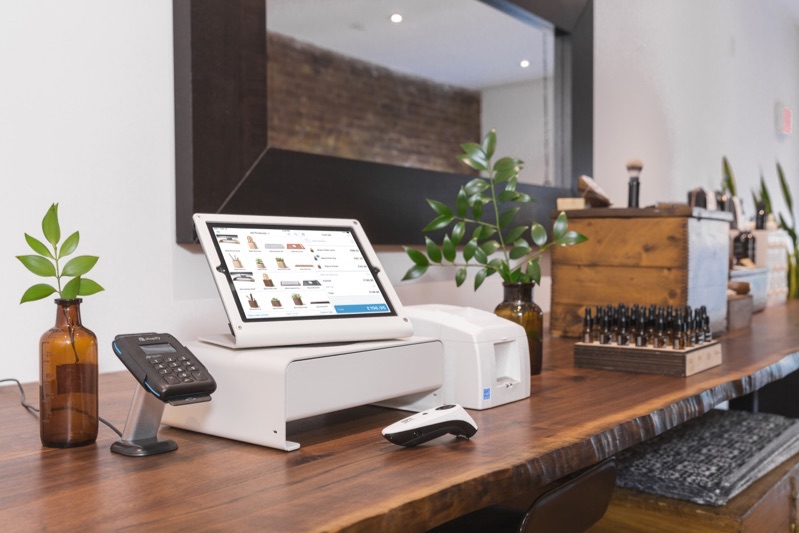Shopify reviews: Scam or good ecommerce solution?
You want
You want me to reveal to you in an honest review if
If that's the case, I'll reveal everything to you; you can create a beautiful website with Shopify but you are limited and be prepared to spend a fortune on your marketing!
To be honest, it's very simple: choose Shopify because it's very efficient. But avoid Shopify if your goal is to build a long-term business. It's easy to set up and anyone can sell products online.
The price starts at 29.-/month
Why am I so confident, you ask?
Shopify and Dropshipping
I first started as a web developer, then I became a digital marketer and entrepreneur. Open Source has always been essential to me. And Shopify is not Open Source. I was closed on the issue. I don't change my mind.
And then, one day I met 2 young people who were doing Dropshipping on Shopify. They were pioneers in 2017, long before the dropshipping bubble exploded and courses were selling like hotcakes.
They showed me their Shopify stores, showing me the dashboards and sales. It was quite incredible. Their technique was simple: creating as many different stores with different products. They were creating over 30 stores per month.
Impossible to achieve with Woocommerce or Magento.
I therefore started on Shopify myself. Bewildered by the simplicity of creating an online store in a few hours.
Everything you need to know about Shopify: In-depth review
I have already used Shopify, so I will give you some feedback. I will try to detail my opinion on Shopify, for each of its features. To better guide you, I have even decided to rate them.
I used a simple 5-point rating system. So, 5 for "amazing", 1 for "awful". There will actually be some "1s" because I'm not completely
Some notes are obviously bad but these features can be complemented by other tools anyway.
If you have never used Shopify before but are considering trying new tools, I will reveal to you what may cause you problems in the future. The same goes for Magento or Kleap, these tools are also very popular. In any case, you must make your own decision
Major brands have their say on Shopify: they love its simplicity
Before diving into evaluating Shopify and its features, you need to know who else is using Shopify.
Here are some Shopify clients you may recognize:
Leesa
Le magasin du New York Times
Redbull shop
Kylie Cosmetics
All this, to tell you that some major (international) brands trust Shopify. We obviously do not know the backstage, but it is a positive signal.
Enough talking now, it's time to reveal mine
My reviews on Shopify (with ratings)
Ease of use: 5/5
Shopify is not only considered as the simplest e-commerce tool, but also as one of the easiest tools to use! In fact, many other tools have been inspired by the Shopify interface to create their own application.
Do you know what COO HARLEY FINKELSTEIN said in 2018?
Our goal is to make Shopify the first thing that merchants think about in the morning, and the last thing they think about at night. In other words, we want Shopify to be the heart and soul of their business. We want to help them sell more through Shopify, and work more efficiently.
Shopifier le COO Harley Finkelstein lors de l’appel aux gains du quatrième trimestre 2018
An example of the ease of use of Shopify is its Flow application (only available for Pro users). It allows you to automate tasks and ideas from a library of pre-established automation templates (also valid for those who build their own template).
Here are a few examples:
Automatically create a support ticket when you receive a negative review on Shopify
envoyer des recherches quotidiennes des best sellers depuis Shopify directement dans un tableur excel
masquer et afficher les produits en fonction de l’inventaire Shopify
ajouter automatiquement un cadeau gratuit pour les commandes de plus de 100.-
The Shopify application can integrate perfectly with other platforms such as Asana, Slack, and many more.
Of course, you have to pay for these tools. If your business is thriving and you don't mind spending, that's perfect, otherwise...
Review on Shopify regarding its customizability: 3/5
Shopify allows you to adapt to your needs through customization.
Most other ecommerce site creation tools only achieve one of these objectives. They are either easy to use and limited, or flexible and complicated.
As your business grows, you will have the opportunity to customize your Shopify store as you wish. You will probably start with one of the pre-defined Shopify themes, but once you are familiar with the Shopify platform, you can also create a theme from scratch.
But it is at this point for me that Shopify is limited. I have visited hundreds of Shopify sites and to be honest, they all look the same. They all have the same layout issues and you can't really change anything about it.
Even as a developer, you are limited on the pages you can modify. For example, you cannot customize the checkout or cart page. And if you want to implement advanced marketing features, the only way is to use an extension and therefore an additional subscription service.
The pricing: 2 out of 5
With Shopify, you can shop in four ways:
A monthly payment that starts at 29.- per month and goes up to 299.- per month. The more expensive packages include additional options and bigger discounts on shipping fees.
Si vous utilisez Shopify comme fournisseur de paiement en ligne, vous devrez payer 2,9 % + 30 ¢ pour traiter la transaction. Les frais diminuent légèrement à chaque mise à niveau : 2,4 % + 30 ¢ sur le plan Shopify avancé. Des frais similaires, légèrement inférieurs, s’appliquent aux paiements en personne.
Si vous utilisez un autre prestataire de paiement, Shopify prélève un pourcentage en plus des frais du prestataire de paiement. Les frais de Shopify commencent à 2 % et diminuent jusqu’à 0,5 % sur le plan avancé.
Si vous choisissez d’utiliser le matériel de point de vente de Shopify, il y a un frais unique de 656.- pour l’ensemble du package qui comprend un support pour iPad, une imprimante de reçus, un tiroir-caisse et un lecteur de cartes. Chacun de ces appareils peut également être acheté individuellement. Si vous ne souhaitez qu’un lecteur de cartes de base, vous pouvez en obtenir un gratuitement avec votre compte Shopify.
The hidden fees of Shopify
In total, Shopify charges you a monthly subscription fee and payment processing fees.
The only fee that is a bit annoying is the one that applies to using other payment methods. These fees start at 2.0% on the lowest Shopify plan and go down to 0.5% on the advanced plan. These fees apply to payments accepted by Paypal and Amazon Payments, among others.
I completely understand why Shopify charges payment processing fees. It is totally normal for their business. But this fee, in addition to other processing fees, is a bit excessive
The positive point is that the majority of your payments will be made through Shopify Payments; it's easier to do. This mainly concerns transactions that will go through Paypal (Note that you will have to pay Paypal processing fees and Shopify fees on each transaction).
Some e-commerce website builders claim to charge 0% transaction fees. This is not entirely true. Yes, they do not charge anything, but your total expenses will still be high. In fact, you also need to set up an account with your own payment provider and they will charge you payment fees. This is a different way of doing things, with Shopify you know your exact expenses.
Management and delivery of products: 4/5
With Shopify, you can manage the shipping of your products as you wish. You can also choose which company you will work with for maritime transport. Since you go through Shopify, you will benefit from reduced rates for these types of services.
On the other hand, in Europe it's a bit limited. There are no local actors like in Switzerland or France.
The available themes on Shopify: 4/5
Shopify offers dozens of themes. Some of them are paid, ranging from 140 to 180 Swiss Francs.
But there are also many free Shopify themes. Even these themes seem to have been created by real professionals.
To choose one, simply browse the Shopify theme store and select the one you need. With paid themes, you will have a more professional website (at an affordable price). One day, when you have enough budget to hire expert Shopify developers to create an ecommerce site that suits you, you can always do so.
In summary, creating a website is easy. You can take care of it yourself.
App Store: 5 out of 5
The Shopify App Store is amazing!
You will find an app for almost any additional features you want for your store: Facebook Messenger integrated into Shopify, billing on Shopify... Everything is there.
In fact, this option really sets Shopify apart from other e-commerce tools.
I know several business owners who have used Shopify and its apps to create their businesses. This means that with just a few clicks in the App Store, you can add a highly advanced and fully integrated app to your Shopify store.
No other e-commerce tool has such an app store (with so many high-quality apps)..
The only downside I would add here is the structure of Shopify applications. Most of them work on a monthly subscription basis. The prices are generally high. The upside is being certain that the applications work and that their creators will help you in case of any issues.
Directory of experts: 5/5
Sooner or later, you will need help with your website.
Perhaps you want to change the layout of your website? Or maybe it's time for a complete rebranding of your brand?
Whatever the case may be, you are lucky!
Shopify has been the leading e-commerce tool for long enough now that it currently has a vast network of professionals to help you with your site. Every e-commerce agency indeed has extensive experience with Shopify.
Shopify also has a comprehensive directory of experts that you can consult. Designers, developers, photographers, marketing specialists, all classified by city. It is very easy to find the help you need. And they are all certified by Shopify.
Market integrations: 5/5
There are several ways to create an online store.
A number of e-commerce companies choose to focus exclusively on Amazon, for example; they do not have a website at all.
But what if you want both? With Shopify, it's possible!
Instead of having to set up your product lists multiple times (manually) - on your own website, Amazon, and eBay - Shopify will do it automatically. First create your products in Shopify, then add integrations for Amazon and eBay
Once you have connected Shopify to your Amazon and eBay accounts, Shopify takes care of the rest.
You save a lot of time!
Product ranking: 3/5
Shopify offers SEO for your product pages.
Do not be mistaken, it will still take a lot of work for your Shopify product pages to rank for any keyword, even if it is somewhat competitive. Fortunately, with Shopify, you have all the tools at your disposal to achieve this.
Indeed, it is possible to optimize product pages, photos, and descriptions for a specific keyword using the standard elements of Shopify's "page optimization" (similar to Yoast).
This does not mean that you will automatically rank for the keywords you want. You will still need to create a lot of quality content to increase the authority of your Shopify site. In fact, my next point is about this content. E-commerce website creation tools are not designed for content publishing. I will give you my opinion and a solution in the next point.
Content and blog SEO: 1/5
This is the category where Shopify completely fails.
Yes, Shopify has a blog. In reality, there is not really a reason why you should use their blog, as it does not have the necessary management and SEO functionalities. So, if you are looking to grow your business or attract traffic, Shopify's blog is not suitable.
If you want an all-in-one system with product sales and a complete marketing system, opt for it
If you truly want to be on Shopify and blog, use WordPress, as it allows you to install all the necessary plugins
In any case, don't forget to use
Point of Sale (POS): 3 out of 5
I don't know anyone who uses Shopify as a point of sale system.
I consider this as a bad sign.
The most popular ones are: Square (especially for small businesses), Clover, and Revel. I have even seen Shopkeep several times.
But I have never seen Shopify, not even once.
I give Shopify a rating of 3/5 because I consider their point of sale not mandatory.
The Final Choice: Shopify vs Kleap vs Magento vs BigCommerce
For small and medium-sized e-commerce businesses, the choice really comes down to: Shopify or Kleap.
Shopify gives you a good tool and ecosystem. The tool itself is powerful, the apps are also, and their team is the best!
Certainly, additional fees can be high (from 2% to 0.5%), but the benefits you will gain from using Shopify are not insignificant. In fact, as soon as you start feeling the impact of these fees, I recommend upgrading to a higher subscription plan. The further you progress, the lower the fees become.
On the Kleap side, you can launch your store for free and only subscribe when it actually works. It is the best tool because it includes the shop and marketing tools to promote it.
In the end, it's an extremely easy choice for me. For any online store, I automatically choose Kleap to build my website and I don't think twice about it.
Free then 4.-/month


